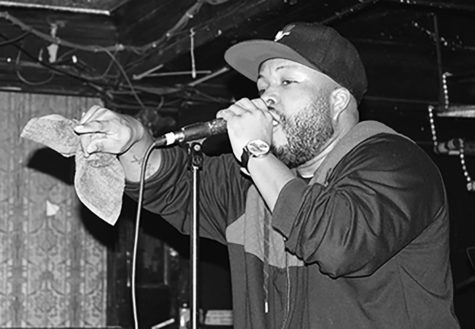Stylistic shifts in rap scene spark opinion

A gloomy aura weighed on the mind of the teenager at the bus stop. Anxiety loomed and his head hung with dread as another day of high school awaited him. Then, the song on his playlist changed. Tupac Shakur’s “Changes” echoed through his ears, and he was hit with the realization that rap had become an immensely impactful influence in his life. Now 27 years old, Musicologist Martin Connor reflects on his experience with rap music guiding him through his struggle with depression.
“I was a loner, you know, I was shy,” said Connor in a phone interview. “I had problems with anxiety and depression. I had a playlist called the ‘feel-good playlist,’ which was basically rap that made me feel better.”
“Changes” was one of the many meaningful songs that Connor kept on this playlist, and he remembers a certain line from the uplifting song that he still reminisces about today.
“[‘Changes’ has] a line that says, ‘I wake up every morning, and I ask myself, is life worth living?’” said Connor. “If someone as rich, as famous, as cool, as powerful as Tupac feels confident enough to ask himself these [difficult] questions, then I felt like it was okay if I’d rather stay home by myself than go to crazy parties.”
Rapper Milton Taylor, a Chicago native, said it is not often that songwriters today include storytelling in their music. He emphasizes the importance of having a clear message.
“We’re all human, we’re living in real life situations and we’re looking for some hope,” said Taylor. “We don’t just want to sit in a situation and hear the bad news and [think] there’s nothing coming after that except for more bad news.”
In recent years, the substance in rap songs has evolved into one that does not directly include a story or a lesson. Artists experimenting with this new style of rap also tend to vary the way they rap their lyrics.
According to Connor, this style is referred to as “mumble rap” and is used to describe songs that consist of artists changing pronunciation and tone of different words, often making the lyrics unintelligible.
“Rappers like 21 Savage and Playboi Carti, I have trouble listening to because their tone is so flat, and it’s almost like their rap is like background music,” said Connor. “The vocals are super mixed and low, like it’s sort of designed to be quiet.”
Senior Jacob Kelenzon said he has been listening to rap since his brother showed him artists such as Lil Wayne and 50 Cent in first grade, but he does not listen to a lot of today’s mainstream rap artists.
“[Rap] hasn’t evolved to a good point, because there were artists back then who were actually good, and their lyrics … had some emotion,” said Kelenzon. “Now, it’s just all mumbling, and half of [the rappers today] don’t even involve themselves in [the songwriting process].”
Connor said despite the general rap audience having clashing opinions on “mumble rap,” the unifying factor in all rap songs is that it is essential to have a good beat.
“You can have good beats with bad raps on them, but you can’t have bad beats with good raps on them,” said Connor. “It just doesn’t happen.”
Taylor said he likes to paint a picture with his lyrics for his audience to visualize, so he makes sure his words can be understood.
“My music is different because you can hear what I’m saying,” said Taylor. “I’m real big on clarity.”
According to a study on rap trends of the past two decades conducted by Researcher Tony Abraham and his colleagues Nikhita Koul and Joe Morales, the theme of lifestyle in popular rap songs remains prevalent from the nineties to today. This theme consists of anything having to do with where someone grew up, who they live with and how they choose to go about each day.
The main factor that has changed is the style of lyrics and the amount of profanity in each song.
“Explicit words was one of the most interesting features we saw [over time],” said Abraham in an email interview. “[Profanity] hit a peak around the year 2000, dropped in usage for the next ten years and then dramatically picked back up the past few years.”
The blend, or the “mix,” of instrumental sounds in ‘90s rap songs were also easier to separate with your ears because of their varying volumes. Now, the majority of rappers mix songs so that every element and instrument in the song is loud, according to Connor.
“I think nowadays, people are so critical of these new rappers because they keep looking for those [rap] elements from the nineties, but can’t find them,” said Connor. “Everyone expects your music to sound perfect, but you can’t please everyone.”

